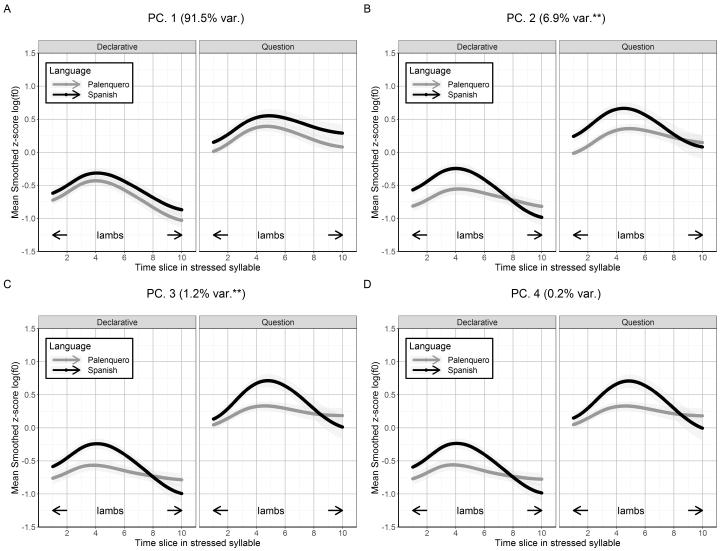Effects of Language, Sentence Modality and Stress on the Final Intonation of Palenquero-Spanish Bilinguals (Working paper)
 Image credit: ggplot
Image credit: ggplot
Abstract
Some creoles have retained tonal patterns from substrate languages and use intonation from the source/lexifier language as hybrid prosodic systems. Palenquero-Spanish bilinguals exhibit a sustained H tone (possibly coming from its African substrate language, Kikongo) which has been linked to Palenquero stressed syllables triggering low boundary tone (L%) truncation in utterance-final position when iambs are involved. However, whether this is imposed over the typical L+H* L% final contour of Spanish utterances in Palenquero-Spanish bilinguals is uncertain as well as other prosodic distinctions. This study investigates duration and fundamental frequency (F0) contours on trochees and iambs in the final position of intonational phrases using functional principal component analysis with mixed effects models, and allowing LANGUAGE and SENTENCE MODALITY effects to be assessed on Palenquero-Spanish bilinguals. Yielded results give phonetically-grounded evidence to claim that SENTENCE MODALITY effects moderate more straightforwardly both final lengthening and the pitch range of speakers irrespective of stress feet, while LANGUAGE condition regulates raised and flatter F0 contours of final iambs. Consequently, bilinguals exhibit the same final intonation in both languages, but the production of final contours in Palenquero iambs remains distinct despite that it is still inconclusive whether this comes from Kikongo or is part of the phonetic variation of Caribbean Spanish.